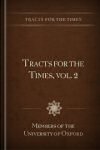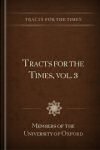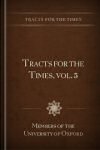Tracts for the Times (6 vols.)
Digital Logos Edition
Overview
In the wake of the French Revolution, political and religious reforms spread through Europe. As these changes jumped the English Channel into Britain, they aroused the concern of many Christians who believed that the liberalism and individualism of Enlightenment thinking were in opposition to the values of the Church. In 1833, a clergyman named John Keble preached a sermon called “National Apostasy” before a group of judges and magistrates. Keble argued that the nation was guilty of abandoning God and called the nation to repentance. In the wake of the sermon, a group of Oxford scholar-priests, including Keble, began publishing a series of tracts. Consequently, their movement became known as the Tractarian Movement.
They called the tracts Tracts for the Times. The tracts touch on a wide variety of topics, ranging from technical theology to devotional works on liturgy. One of the main concerns of the authors was that the Church of England had become too detached from its roots. They believed that the Reformation, while necessary in some ways, had been taken too far in the 300 years following the first Book of Common Prayer and that important beliefs and practices had been lost. In other words, the wheat had been torn out with the tares. The result was that the Church of England was now weak and in danger. The Tractarians (as they became known) encouraged a return to the teachings of the Church Fathers and stressed the importance of regular participation in the life of the Church. They emphasized the need for Christians to allow the beliefs and practices of the Church, not the prevailing culture, to act as the primary source of their beliefs and practices.
The Logos edition of Tracts for the Times allows you easy access to these 90 tracts’ vast amount of material. The tracts contain devotionals and liturgical materials, as well as theological and historical references. Every word is indexed, allowing for near-instant search results and allowing you to jump right to the information you are looking for. Greek, Latin, and Hebrew terms are linked to the language resources in your library. Scripture references appear on mouseover, and a click will take you to the reference in context.

- All 90 of the Tracts for the Times
- Topical excerpts from the Church Fathers
- Topical and chronological tables of contents
- Title: Tracts for the Times
- Authors: Members of the University of Oxford
- Publisher: J. G. & F. Rivington
- Volumes: 6
- Pages: 3,270

Volume one contains tracts 1 through 46, written from 1833 to 1834.

Volume two contains tracts 47 through 70, written from 1834 to 1835.

Volume three contains tracts 71 through 77, written from 1835 to 1836.

Volume four contains tracts 78 through 82, written from 1836 to 1837.

Volume five contains tracts 83 through 88, written from 1838 to 1840.

Volume six contains tracts 89 and John Henry Newman’s infamous tract 90. In tract 90, often referred to as tract XC, Newman argued that the 39 articles did not rule out Roman Catholic doctrine. The furor raised over the publication of the tract led to the cessation of the series of tracts and contributed to Newman’s decision to convert to Roman Catholicism.
Reviews
3 ratings

Ordice Gallups, Obl.S.B.
8/24/2018

Unix
1/12/2016
AeliusCicero
6/19/2014